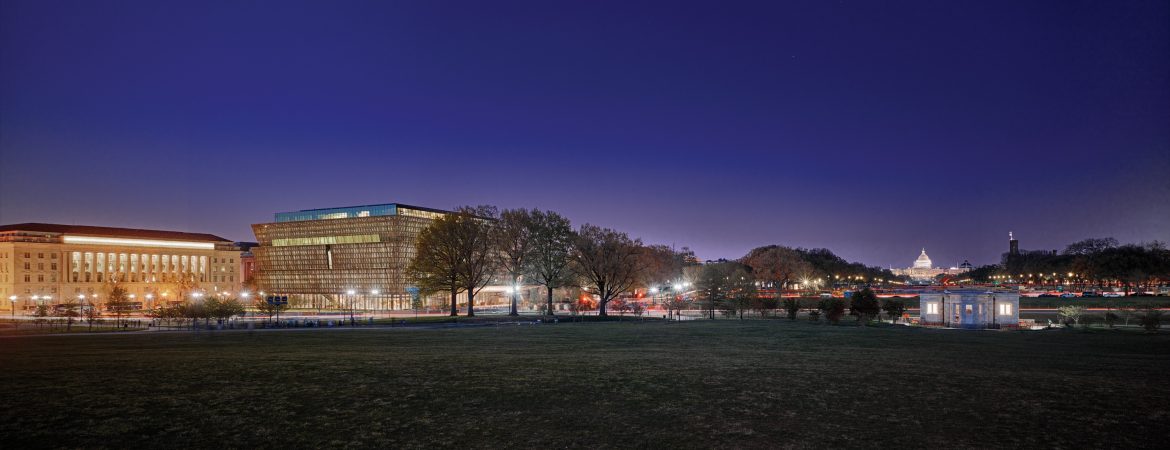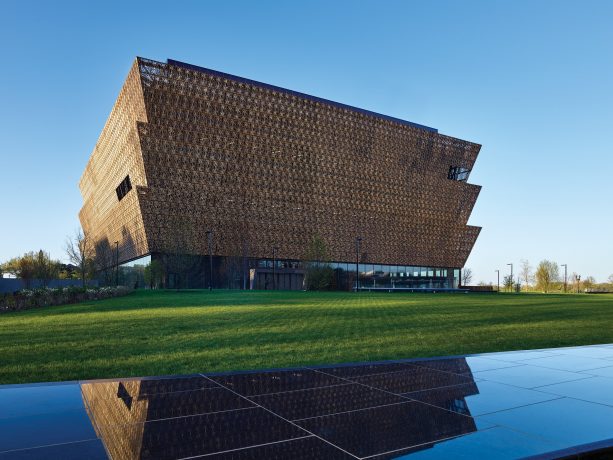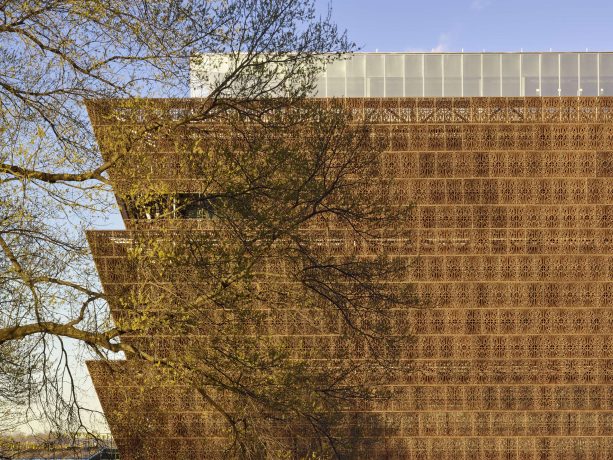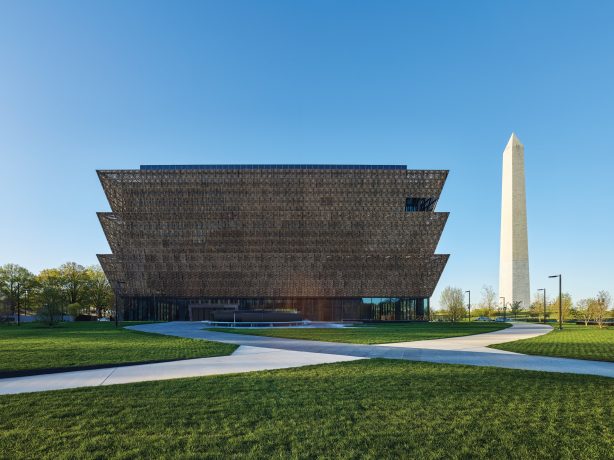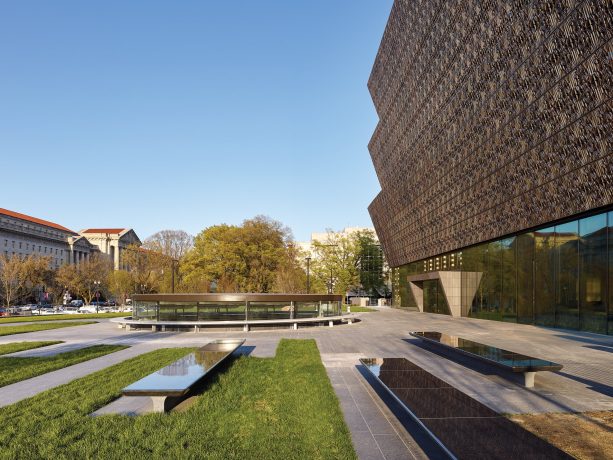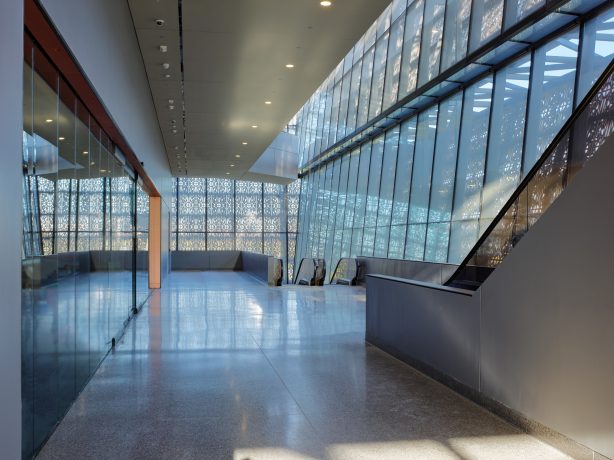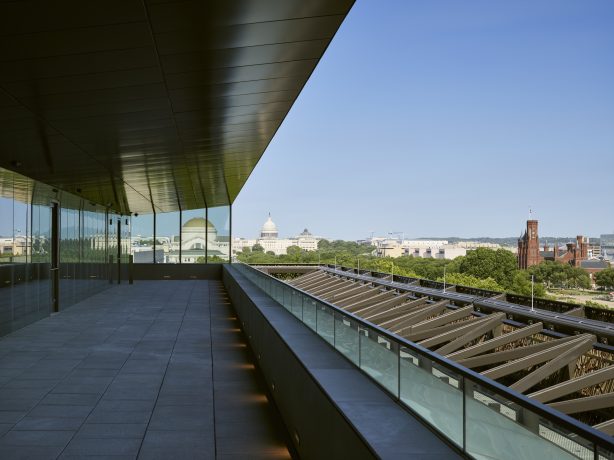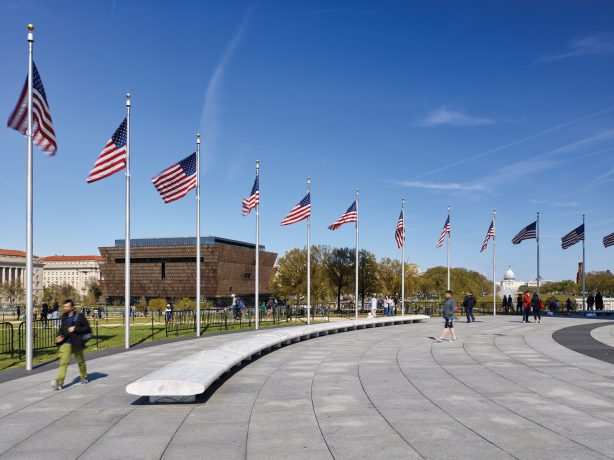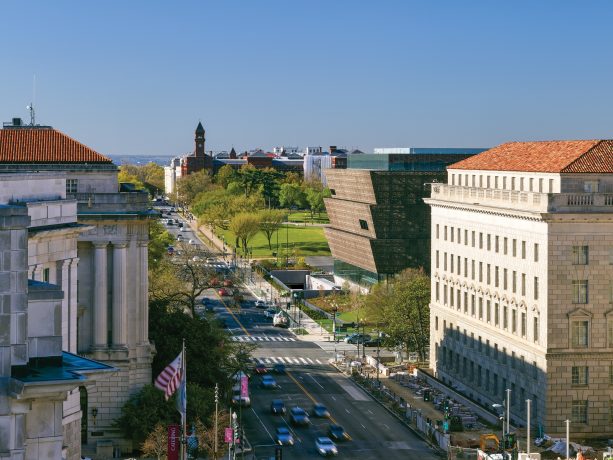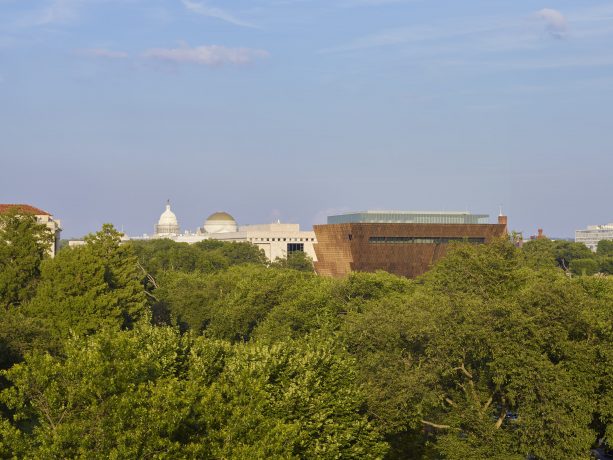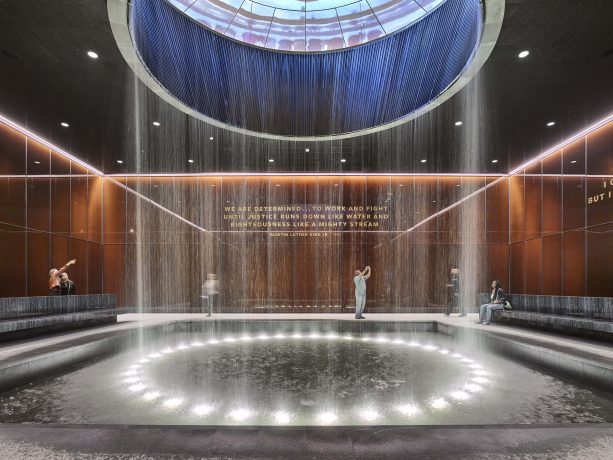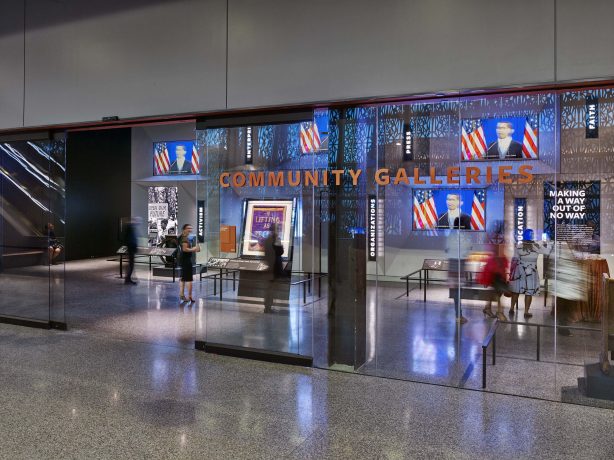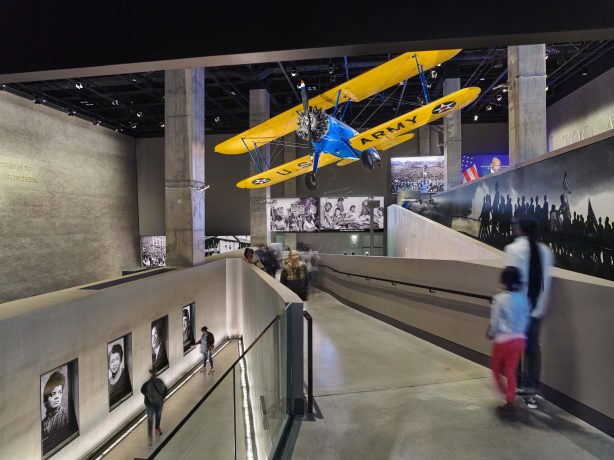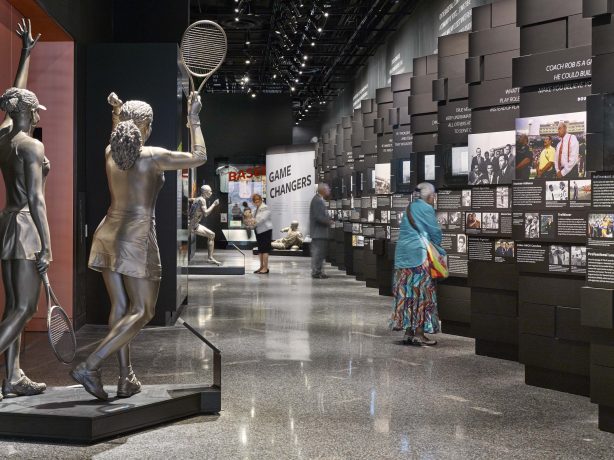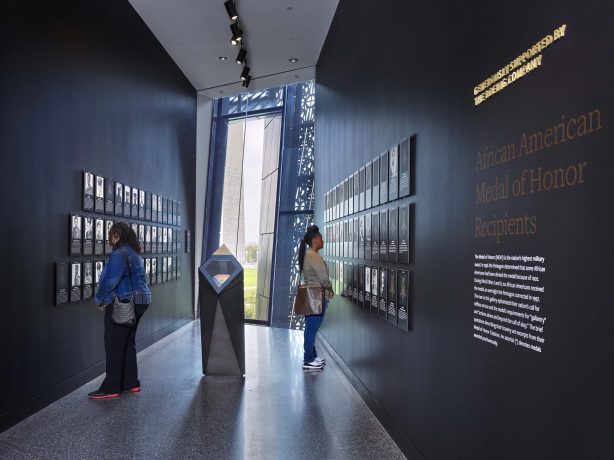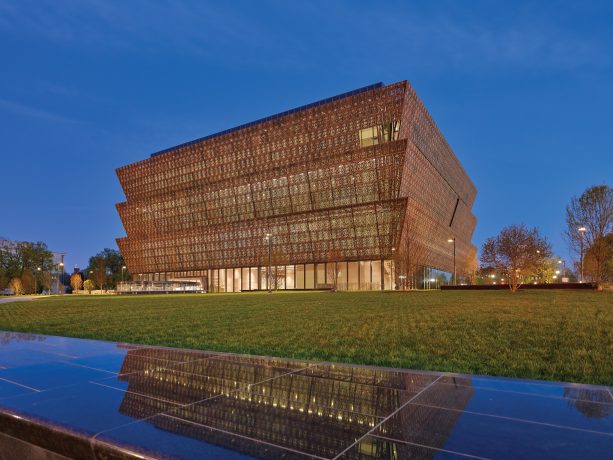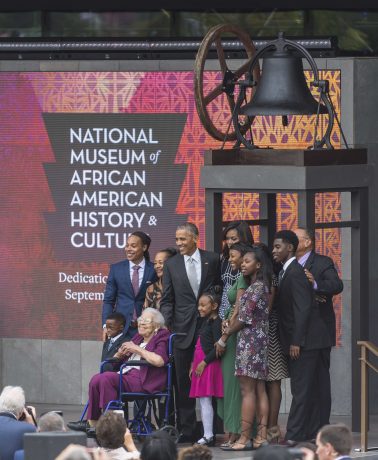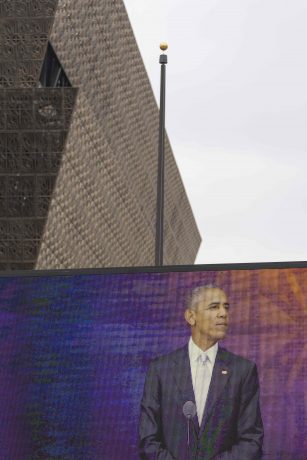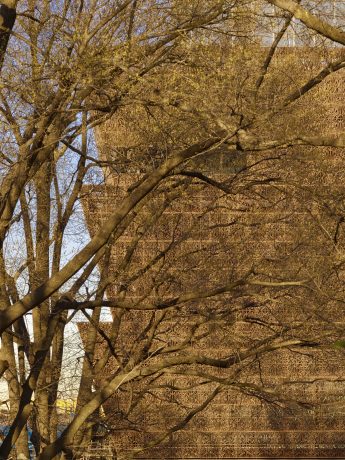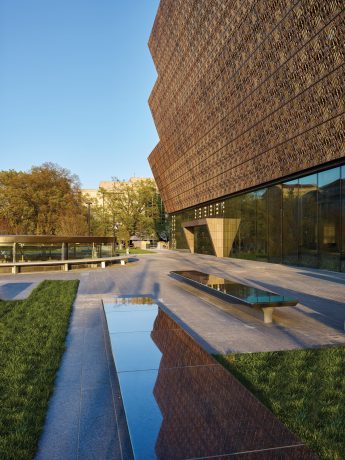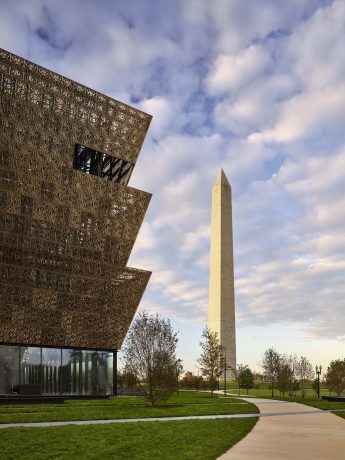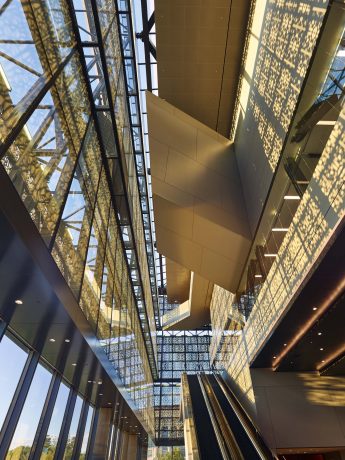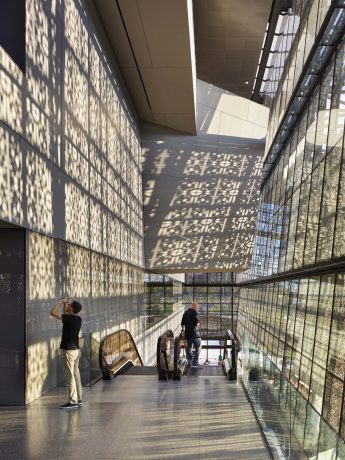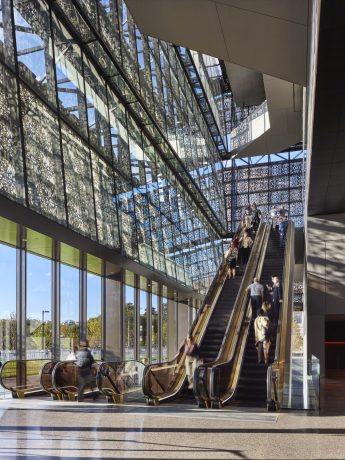September 2017 marks the one-year anniversary for the Smithsonian's long-awaited National Museum of African American History and Culture (NMAAHC). A year had passed since the 44th President of the United States, Barack Obama, spoke at the museum’s opening. Despite this, politically it seems that we didn’t go one year forward in African-American history, but some years back. Today, when social challenges in American society overshadow foreign threats and political correctness is being ridiculed, it is very important not to give up, but instead to remember how far we’ve come. For that end, visit the Smithsonian’s inspiring National Museum of African American History and Culture in Washington D.C.


The museum is one of D.C.'s must-sees. Its international architectural competition was held in 2009 and won by lead designer David Adjaye and lead architect Philip Freelon. Together, they created a site that is both classical and modern, and has a strong conceptual resonance with America’s deep and longstanding African heritage.
Being part of a Ghanaian diplomatic family, Adjaye travelled extensively through the world and visited all 54 independent nations of Africa. From an early age, he was immersed into rich African culture and he embedded his knowledge and connection to the continent in the NMAAHC project.
"I was forced from a very early age to negotiate a wide variety of ethnicities, religions, and cultural constructions. Most of my work has always been in cosmopolitan metropolitan cities, or places where differences are being negotiated all the time. A sensitivity to that is at the heart of my practice". Architect David Adjaye
When walking up to and through the overwhelming yet light building, you will notice a variety of distinctive elements from Africa and the Americas. The architecture represents a classical Greco-Roman form by using a base and shaft topped by a corona.


From afar, you can think of it as sitting on the National Mall from the times of the British Empire, but in this case, the corona is inspired by the three-tiered crowns used in Yoruban art from West Africa. The main entrance has architectural roots in the African Diaspora, especially the American South and Caribbean, and when you step inside, it feels like the building is wrapped in a cozy lace textile. You get that due to an ornamental bronze-colored metal lattice, inspired by the intricate ironwork which enslaved African-Americans did in Louisiana, South Carolina, and elsewhere.



The museum itself houses exhibit galleries, administrative spaces, a theater space and a collections storage space. It is divided conceptually into 4 sections: history and culture (the primary hub) – from Africa to the beginnings in America to the Civil Rights movement until now; “the life of the citizen” – inclusion in the military, in public life, the emergence of the black middle class and businesses; entertainment and the arts – how African-American music and culture translated through the American identity; the Sweet Home Café and a grand museum shop.


Moving through the museum, you first go underground to learn the history and then make your way to the top. This fully reflects the way David Adjaye and Philip Freelon elaborated the museum: “the form of the building suggests a very upward mobility. It’s a ziggurat that moves upward into the sky, rather than downward into the ground. When you look at the way the circulation works, everything lifts you up into the light”.
“The museum is not a story about past trauma. For me, the story is one that’s extremely uplifting, as a kind of world story.” Architect David Adjaye.
Openness and light are distinctive to the museum – the lace/lattice opens the interior to exterior daylight. Transparency and the feeling of inclusion stimulate open dialogue about race and help promote reconciliation and healing. We must mention that the design is also architecturally sustainable. This building is the first museum on the Mall designed to sustainability standards, serving as the Smithsonian’s “Green Flag”.


If you are in charge of your time, then better it is better to visit the museum on the weekdays. This is because we think (and hope) it will stay on everyone’s must-see list for many years to come causing the weekend the lines to become quite long. If you get lost, or have any question, then ask the very friendly staff that will help you navigate the museum or choose the best option on the Sweet Home Café menu. The museum is inspiring and engaging and if you feel like sharing your experience, then at the end of the historical section, you can find video booths where you can record a video to settle your mind and share your thoughts.

